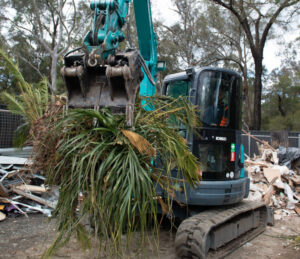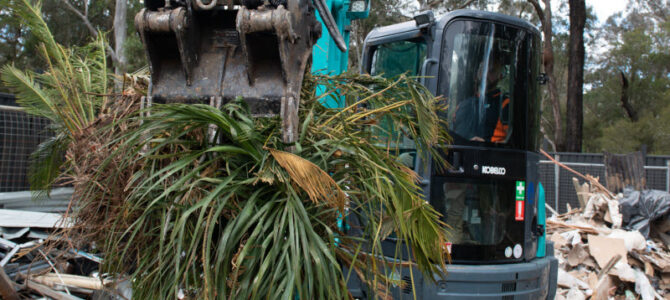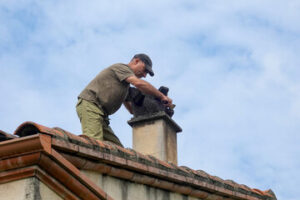Whether you’re doing a home remodel, cleaning up your yard, or simply making some greener choices at the store, there are many benefits to going green. Using recycled materials, reducing waste production, and embracing smarter recycling practices can make your project more eco friendly and less expensive.
Green waste is typically composed of garden refuse such as grass clippings and leaves, along with kitchen scraps like food scraps, coffee grounds, and eggshells. Green Waste Collection Mandurah can be processed at specialized facilities to produce biogas.

When a tree becomes too large for its space, or has suffered from damage or disease, it may need to be removed. Removing a tree is a significant undertaking, and requires the services of professional arborists. The first step in the process is to assess the condition of the tree, and determine whether it is safe to remove. Once the assessment is complete, the next step is to gather the necessary equipment and materials. This includes tools such as pruning shears, loppers, and a garden rake. In addition, a wheelbarrow or sturdy cart is needed to transport the debris away from the site.
The green waste removal process begins by trimming the larger branches and trunks of the tree. This helps to reduce the overall weight of the debris, making it easier to move and transport. Once the large sections of the tree are removed, the crew will then move on to the smaller twigs and leaves. This material can then be sorted and bundled for recycling or composting.
Regular green waste removal is vital to the health and well-being of your trees. When left to accumulate, this organic material can create a moist environment that can cause root rot and fungal diseases in the surrounding soil. The regular removal of this debris also helps to maintain proper airflow and sunlight around the base of your trees, ensuring their long-term health and vitality.
When choosing a green waste removal company, it is important to select one with a good reputation and extensive experience. Make sure to find out how long they have been in business, and ask for references from previous clients. Also, look for a company that offers a wide range of waste management services. This will help to ensure that you get the best value for your money.
While it is possible to do the work yourself, a green waste removal service will save you time and effort. This is especially true if you have a large amount of debris to dispose of. Hiring a professional will also ensure that all necessary safety measures are taken, and that the work is done correctly.
Tree trimming is a crucial part of green waste removal. It is the practice of removing branches that have become overgrown in order to maintain a healthy, balanced tree and promote proper growth. It also enhances a tree’s appearance and helps to improve the overall landscape. It can help to prevent diseases, insects, and other problems that can interfere with a tree’s health.
Unlike pruning, which is more focused on the health of a tree, tree trimming is mainly about aesthetics. It is important to know the difference between the two services because they are very different in their purposes and how they should be conducted.
Aside from enhancing a landscape’s beauty, tree trimming can also help to reduce the risk of damage to your property or home during a storm. Overgrown branches can rub against or break your home’s roof, knock over fences, or even hit power lines. Regularly trimmed trees can minimize this risk, so your family and pets will be safe from falling limbs during strong winds or heavy rainstorms.
Another benefit of regularly trimming your trees is that it will allow them to absorb sunlight better. Long branches can block out the sun’s rays, which can affect how well they grow and lead to an unsightly look. With proper pruning, you can remove diseased, dead, or broken branches that may be preventing your plants from getting enough sunlight to grow properly.
Lastly, tree trimming is an important aspect of green waste removal because it is used to turn the debris into compost that is then donated to local farms and gardens for use in growing new trees, flowers, and vegetables. It is a great way to make sure that your green waste doesn’t end up in landfills, where it can harm the environment.
Green waste is the biodegradable material that comes from trees or plants. It can include grass clippings, shrub and yard trimmings, twigs, leaves, palm tree fronds, brush, logs, and stumps. This type of rubbish is different than your typical garbage, as it can be turned into mulch or compost. This is beneficial because it reduces the amount of waste in landfills and helps with carbon sequestration.
Generally, residents can place green waste into paper lawn and leaf bags or bundles for curbside collection. However, it’s not recommended to place more than 10 items (bags or bundles) at a time. Individuals can also burn their green waste after obtaining a permit or pay landscaping companies to manage it. In addition, residents can drop off their green waste at privately-run facilities that accept it for a fee.
While some municipalities have green waste programs, many of them don’t. In some instances, green waste may be collected by private junk removal services. This can be a great option for those who don’t have the space to store it, or who prefer to avoid the hassle of taking it to a green waste facility themselves. The service can also make sure that the waste is handled responsibly, which helps the environment.
In a world grappling with environmental issues, education emerges as the beacon of hope. It empowers individuals to embrace sustainable practices and create a profound impact on the environment. Tree education ignites a passion for environmental conservation, fuels curiosity, and nurtures a deep respect for our planet.
The provides teachers and students with free online tools to quantify the dollar value of ecosystem services provided by trees on school grounds or in their community. These activities integrate science, economics, geography, and language arts to address cross-curricular learning standards.
Green waste is compostable and includes grass clippings, weeds, leaves, shrub and brush trimmings, and fruit or vegetable scraps, along with coffee grounds, egg shells, and other organic matter from home or commercial kitchens. It does not include wood, bark, dirt, hay, or large branches, which are considered brown wastes and not part of the green waste collection.
To learn more about recycling green waste in your community, contact the They offer four different curbside collection programs, including Green Waste, Christmas Tree Collection, and Leaf Collection.
As a local, family-owned business, strives to be environmentally responsible. We recycle as much of our green waste as possible, and we encourage our customers to do the same. Green waste contains a lot of valuable nutrients that are good for the soil. It also helps keep our community healthy by reducing the amount of trash we produce.
We participate in several yearly tree planting events at area schools through our Learning with Trees program. These events provide an exciting way for kids and their families to get outside and take part in an ecologically friendly activity. We also work closely with the EPA’s i-Tree program to help students learn about the value of trees and how they can improve their own communities through tree planting.
For 29 years, the has brought hands-on environmental education to schools through the power of trees. When students plant a tree on their school grounds, they leave behind a legacy that they can share with future generations. Studies have shown that children who are exposed to more nature perform better in school, and a well-treed campus can have numerous other benefits, from improving student health to lowering stress levels and boosting focus.






